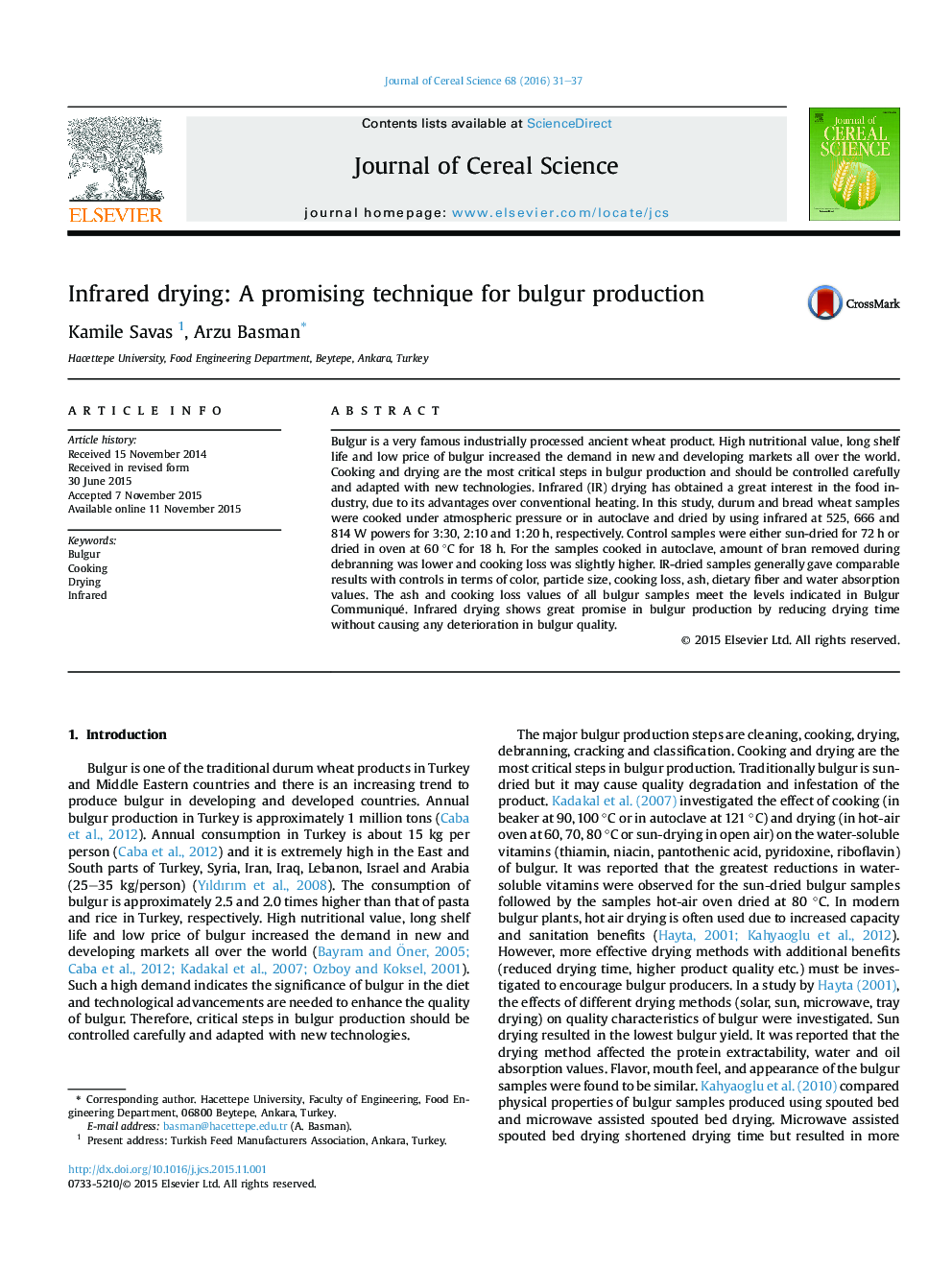| Article ID | Journal | Published Year | Pages | File Type |
|---|---|---|---|---|
| 6377691 | Journal of Cereal Science | 2016 | 7 Pages |
Abstract
Bulgur is a very famous industrially processed ancient wheat product. High nutritional value, long shelf life and low price of bulgur increased the demand in new and developing markets all over the world. Cooking and drying are the most critical steps in bulgur production and should be controlled carefully and adapted with new technologies. Infrared (IR) drying has obtained a great interest in the food industry, due to its advantages over conventional heating. In this study, durum and bread wheat samples were cooked under atmospheric pressure or in autoclave and dried by using infrared at 525, 666 and 814 W powers for 3:30, 2:10 and 1:20 h, respectively. Control samples were either sun-dried for 72 h or dried in oven at 60 °C for 18 h. For the samples cooked in autoclave, amount of bran removed during debranning was lower and cooking loss was slightly higher. IR-dried samples generally gave comparable results with controls in terms of color, particle size, cooking loss, ash, dietary fiber and water absorption values. The ash and cooking loss values of all bulgur samples meet the levels indicated in Bulgur Communiqué. Infrared drying shows great promise in bulgur production by reducing drying time without causing any deterioration in bulgur quality.
Related Topics
Life Sciences
Agricultural and Biological Sciences
Agronomy and Crop Science
Authors
Kamile Savas, Arzu Basman,
